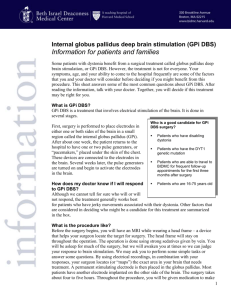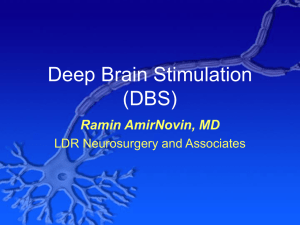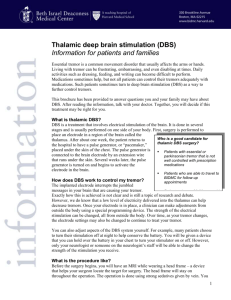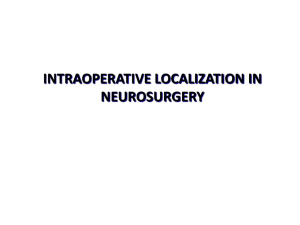DBS-MRI air/blood study
advertisement
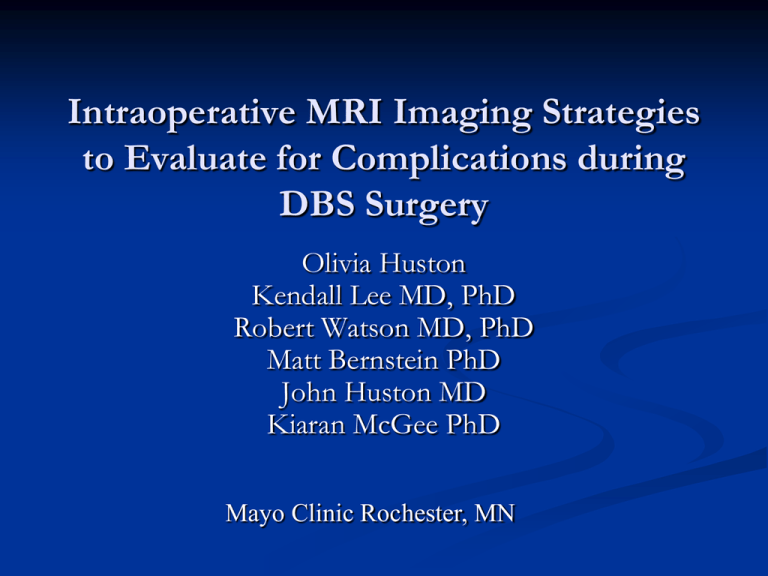
Intraoperative MRI Imaging Strategies to Evaluate for Complications during DBS Surgery Olivia Huston Kendall Lee MD, PhD Robert Watson MD, PhD Matt Bernstein PhD John Huston MD Kiaran McGee PhD Mayo Clinic Rochester, MN Intraoperative MRI During DBS Surgery Purpose To determine the optimal imaging sequences, the imaging findings and the clinical consequences of those findings for MRI performed during DBS surgery. Intraoperative MRI During DBS Surgery Methods • 143 patients underwent 152 DBS surgeries utilizing intraoperative 1.5T MRI. • MRI sequences utilized: - T1 MP-RAGE pre and intra-op - T2* GRE intra-op - T2 FLAIR selectively - T2 FSE selectively Intraoperative MRI During DBS Surgery Results Number of Surgeries: 152 • • • • • Subdural Hematomas: 5 Subarachnoid Hemorrhages: 3 Intraparenchymal Hemorrhage: 1 Subarachnoid Air: 4 Brain Shift: 144 Intraoperative MRI During DBS Surgery Subdural Hematoma • Number of SDH: 5 • Average thickness: 5.2 mm • Range: 4-8 mm Subdural Hematoma Intraoperative MRI During DBS Surgery Subarachnoid Hemorrhage • Number of SAH: 3 • One patient experienced headache and disorientation requiring 2 additional days of hospitalization. Symptoms cleared prior to discharge. Subarachnoid Hemorrhage Intraoperative MRI During DBS Surgery Intraparenchymal Hemorrhage • Number Hemorrhages: 1 • 5 x 5 mm Intraparenchymal Hemorrhage Intraoperative MRI During DBS Surgery Subarachnoid Air • Number of SA Air: 4 Subarachnoid Air Intraoperative MRI During DBS Surgery Brain Shift • Number with Shift: 144 • Average: 0.6 cm • Range: 0.1-1.3 cm Brain Shift Intraoperative MRI During DBS Surgery Conclusions • Intracranial hemorrhage is occasionally identified but is rarely clinically significant. One delayed SDH required evacuation. • Brain shift during DBS surgery is common. • Subarachnoid air mimics subarachnoid blood on GRE. • Selective use of T2 FLAIR and T2 FSE imaging can confirm the presence hemorrhage or air and precludes the need for CT exams.

